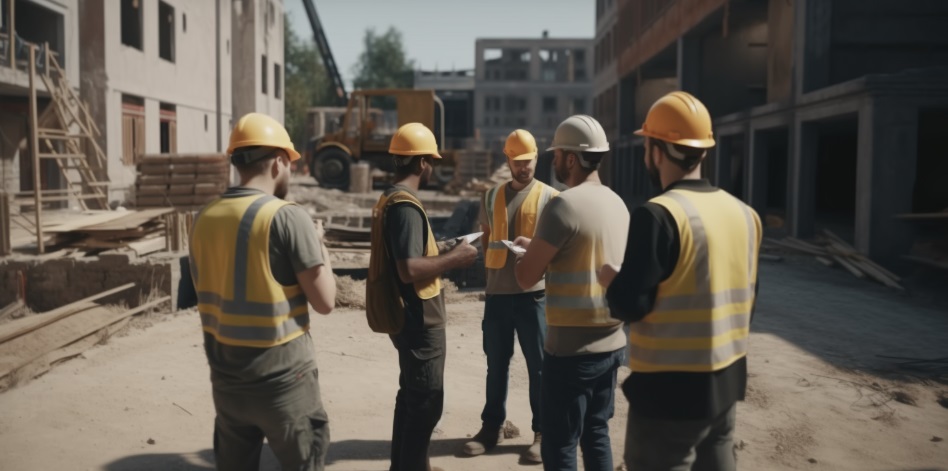Online Induction >> Site Orientation
Published 21/05/2023
Site Orientation
Best Setup and Guide

Since a worksite is associated with many risks, site orientation must be carried out before the work commences. Contractors and employees must be equipped with thorough training and complete an online site orientation. This orientation needs to be employed to minimize incidents on the site.
It aims at ensuring that the contracted employees comply and reduce fatalities. Employees agree to report hazards, practice safety protocols and adhere to policies and procedures by having the orientation. Every contractor wishes to accomplish work with minimal accidents and within the speculated time.
See more from
what is an orientation.
This will be commonly part of your
safety orientation or
new employee orientation and might consist of a
check list or
forms.
View Site Orientation Templates, Forms and Examples

Importance of Site Orientation for Contractors or Employees

The site orientation is often the first step contractors and employees take before they start working on site which is where they'll receive their brief around important safety information, procedures to follow and other critical information they need to be aware of before they start work on site, especially around site specific risks and hazards.
Commonly the site orientation will cover areas for:
- To equip stakeholders with prior knowledge about the site
Contractors, subcontractors, and their employees would be exposed to serious hazards without site orientation. Site orientation is the first step to ensuring safety for every stakeholder in the construction process. They are equipped with knowledge on how to report incidents, handle emergencies, mitigate accidents, and handle first aid.
- It is an engagement tool.
Site orientation is the perfect tool for introducing employees to processes when it comes to working at a construction site. With the increased technology, virtual tours to the site can be done so that workers can know the working environment. The stakeholders decide on the best check-in and check-out procedure depending on the automation on the site.
- Reduce accidents
All that we need is to reduce accidents in the workplace. When workers are informed what to do, serious accidents can be reduced to minor accidents, thus reducing them. A reduction in accidents means a reduction in hospital bills.
- Saves time
Instead of workers arriving at the site and getting confused on the first day, virtual visit helps save time by giving them an idea of the site. When they arrive, they spend little time setting up the machines and commencing the work.
- Preparation tool
The contractor and coworkers have a clue about the environment's nature so they can adequately prepare. They can brainstorm the potential personal protective equipment depending on the weather and the best working hours.
What should you include in a Site Orientation Setup
A common structure you might consider in your site orientation might include topics around:
1. Potential hazards
The contractor should know what hazards will befall while executing the task. Neither the contractor nor the employer should assume zero incidents; thus, all hazards must be documented and given to the contractor.
2. Site location
The contractor is unaware of the site location at the negotiation time and needs direction for reaching the site. The employer should include details of the site location and, when possible, pin it for the contractor to trace it easily.
3. Training
The contractor and employees must be factored in for training to avoid incidents. Training prepares them to counter challenges from previously stored knowledge. The training also equips them with knowledge of how to use personal protective equipment since some are complicated.
4. Emergency evacuation measures
The employer should include evacuation plans for injured employees. Evacuation alarms should be installed at locations many employees can reach to ring the alarm in case of a fire or gas breakage. Emergency maps need also be provided for the workers to run for safety.
5. Communication channel
Construction projects usually have several stakeholders who generate information daily. The contractor should have one communication channel for delivering information to the workers and the employer. Communication is critical in site orientation since the contractor is new to the site and needs frequent clarifications.
Introducing the contractor to the site gives a clue about the environment and critical features like the soil structure, drainage, topography, and weather. The first step of site orientation is important as the construction phase, so contractors and employers should not assume it.
Ready to create an Online Site Orientation?
The easiest way to deliver your site orientation before contractors or employees arrive on site is through an online site orientation.
Try creating a site orientation or look at existing contractor orientation forms, checklists and templates right here:

 Since a worksite is associated with many risks, site orientation must be carried out before the work commences. Contractors and employees must be equipped with thorough training and complete an online site orientation. This orientation needs to be employed to minimize incidents on the site.
Since a worksite is associated with many risks, site orientation must be carried out before the work commences. Contractors and employees must be equipped with thorough training and complete an online site orientation. This orientation needs to be employed to minimize incidents on the site.

 The site orientation is often the first step contractors and employees take before they start working on site which is where they'll receive their brief around important safety information, procedures to follow and other critical information they need to be aware of before they start work on site, especially around site specific risks and hazards.
Commonly the site orientation will cover areas for:
The site orientation is often the first step contractors and employees take before they start working on site which is where they'll receive their brief around important safety information, procedures to follow and other critical information they need to be aware of before they start work on site, especially around site specific risks and hazards.
Commonly the site orientation will cover areas for:

 Safety Orientation
Safety Orientation
 What is an Orientation
What is an Orientation
 New Employee Orientation
New Employee Orientation
 Orientation Form Template
Orientation Form Template
 Freshman Orientation Program
Freshman Orientation Program
 Employee Orientation Checklist
Employee Orientation Checklist
 Student Orientation Ideas
Student Orientation Ideas
 Template
Template
 Construction Orientation
Construction Orientation
 Contractor Orientation
Contractor Orientation
 Safety Orientation
Safety Orientation
 Site Orientation
Site Orientation
 FAQ
FAQ